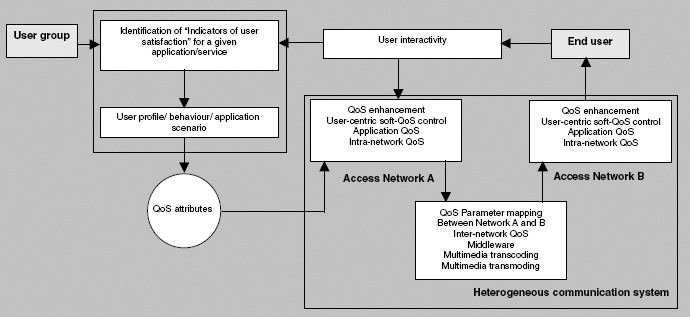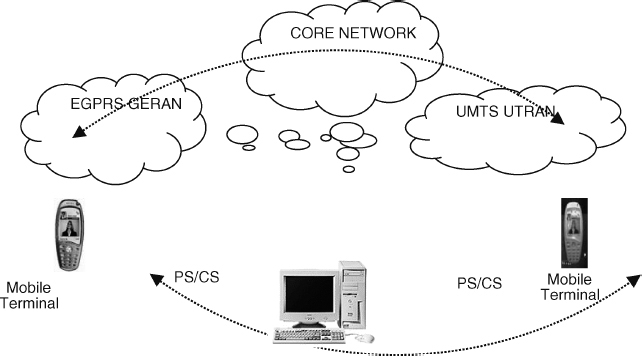10.3 Implementation of a QoS-optimized Inter-networked Emulator
This section describes the implementation of the proposed QoS architecture for EDGE-UMTS systems. The implementation follows a detailed description of each element of the QoS architecture, which is explained in Section 10.2. The generic QoS architecture described in Section 10.2 is applicable to any heterogeneous network system. However, the EDGE-UMTS system has been used as a case study due to its popularity in 3G wireless communication systems.
Figure 10.3 shows the role of the QoS architecture in a practical operating environment, i.e. EDGE-UMTS. The system consists of five components: a transmitting mobile terminal, EDGE emulator, QoS mapping emulator, UMTS emulator, and receiving mobile terminal, as shown in Figure 10.4. The terminal emulator emulates the mobile terminal and is capable of transmitting and receiving multimedia data. An MPEG-4 data transmitter and decoder are integrated into the terminal emulator. The received data is decoded in real time and is displayed on the terminal emulator.

Figure 10.2 The proposed QoS architecture. Reproduced by Permission of ©2005, 2007 IEEE

Figure 10.3 EDGE-UMTS parameter mapping emulator. Reproduced by Permission of ©2005 IEEE
The EDGE emulator consists of two parts: the ...
Get Visual Media Coding and Transmission now with the O’Reilly learning platform.
O’Reilly members experience books, live events, courses curated by job role, and more from O’Reilly and nearly 200 top publishers.

